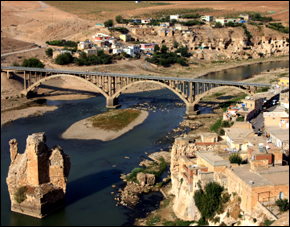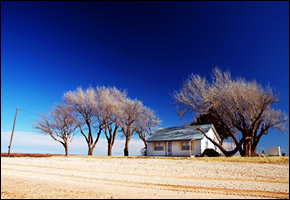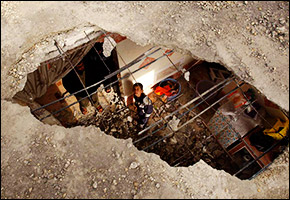New Bank Loans Revive Controversial Ilisu Dam Project in Turkey
The Turkish government plans to move forward with the dam despite international opposition.

The Turkish government will continue construction of the Ilisu dam on the Tigris River after receiving loans from three national banks, Turkey’s environment minister said, according to Reuters.
“This dam will be built definitely because we need it,” said Minister Veysel Eroglu, Reuters reports.
Three Turkish banks will provide $430 to $500 million towards the estimated $1.7 billion cost of the dam.
The money will fill make up for financial losses incurred in July 2009 when a consortium of European credit agencies backed out of the project after they determined the dam would not meet World Bank environmental and cultural preservation standards.
Turkish officials argue that the 1,200 megawatt dam will help reduce the country’s reliance on energy imports, and evenutally bring in money from tourism and fishing.
The Ilisu dam is part of Turkey’s Southeast Anatolia Project – an economic development program for the country’s poor southeastern corner. The $32 billion-project, known in Turkish as GAP, will build 22 dams and 19 hydroelectric projects to boost irrigated agriculture in the arid region.
Downstream countries Syria and Iraq oppose many of the GAP dams because they fear it would give Turkey too much control over the headwaters of the Tigris and Euphrates rivers.
International furor over the Ilisu dam has arisen because the project would flood the historic town of Hasankeyf, one of the oldest continually inhabited places in the world.
Dam opponents have tried to pressure the Turkish government to recognize Hasankeyf’s historical importance and nominate the site for UNESCO World Heritage status.
In an attempt to compromise, the Turkish government agreed to move 12 of the town’s 300 monuments to a new cultural park above the planned reservoir, but critics say the monuments are fragile and many would crumble.
Source: Reuters
Read more about Hasankeyf from the Smithsonian
Brett writes about agriculture, energy, infrastructure, and the politics and economics of water in the United States. He also writes the Federal Water Tap, Circle of Blue’s weekly digest of U.S. government water news. He is the winner of two Society of Environmental Journalists reporting awards, one of the top honors in American environmental journalism: first place for explanatory reporting for a series on septic system pollution in the United States(2016) and third place for beat reporting in a small market (2014). He received the Sierra Club’s Distinguished Service Award in 2018. Brett lives in Seattle, where he hikes the mountains and bakes pies. Contact Brett Walton










How they can live with themselves when Hasankeyf is of key historical importance, not just for the rest of the world but Turkey in particular, is beyond me and they need to thing again on this one and fast. I’m of Turkish descent and I am appalled.
Thank Gott Hasankeyf is going to be preserved under water, so that in 1,000 years when the dam is no longer there, it can be studied in its fullest content, not ripped apart by inhabitants who care nothing of history.
We are only thinking about Hasankeyf (which is a true concern) and not thinking of the country downstream – Iraq. This dam is not built in coordination with Iraq, as per International law, and will deprive Iraq from its water resources when it needs it. Ilisu-Ceaser Dam will use the water mostly for hydropower in addition to some water for irrigation. As a result Iraq may get the ‘hydropower’ water in the wrong season, when it does not need it. Addi tonally, when the lake is being filled, Iraq will suffer greatly. Since Iraq is week and divided (thanks to the U.S. invasion), Iraq has no hope of making its voice heard. International community have an obligation to stop this dam until an agreement is reached between Turkey, people of Hasankayf, and Iraq.